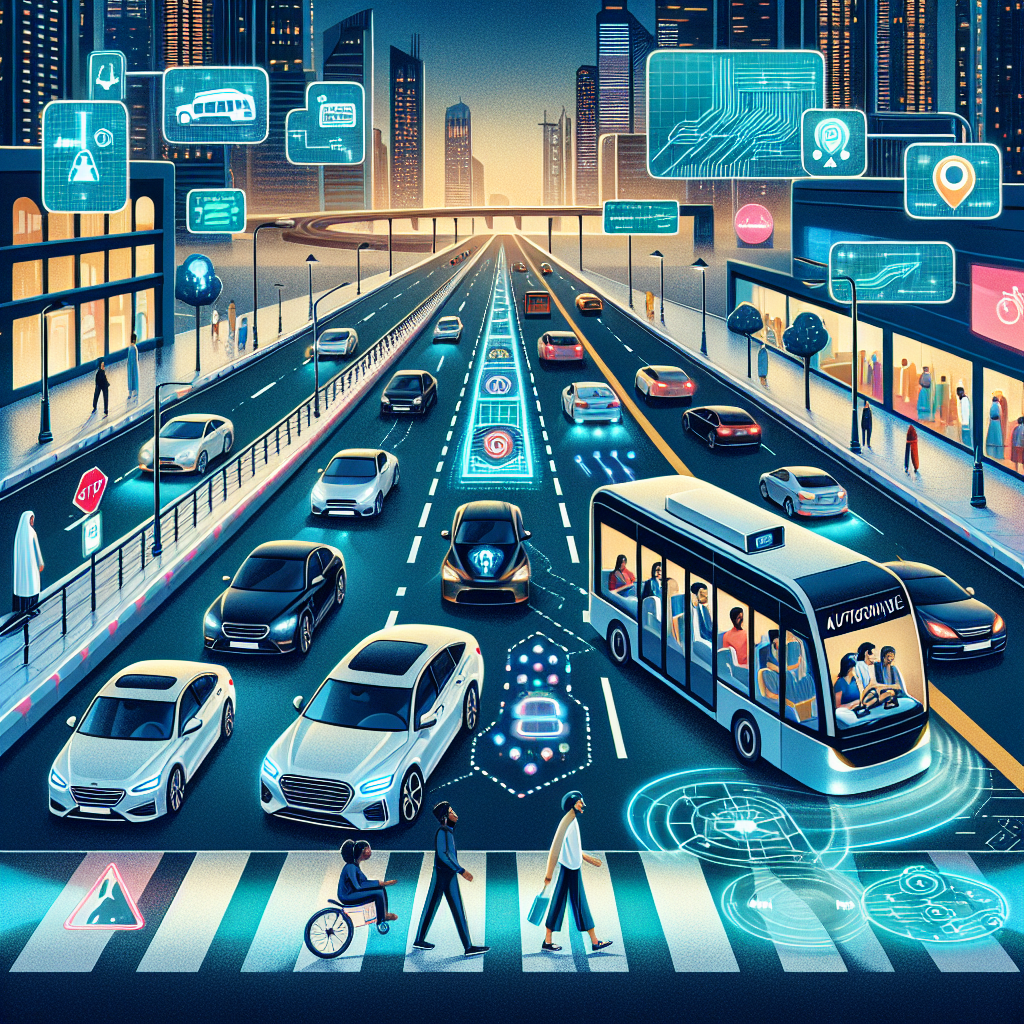-
Table of Contents
How New Technology Is Improving Safety On The Road

With the rapid advancement of technology, various industries have witnessed significant improvements in safety measures. One such industry that has greatly benefited from technological advancements is the automotive industry. New technologies have revolutionized the way we drive and have made our roads safer than ever before. In this article, we will explore the different ways in which new technology is improving safety on the road.
1. Advanced Driver Assistance Systems (ADAS)
Advanced Driver Assistance Systems (ADAS) have emerged as a game-changer in road safety. These systems use a combination of sensors, cameras, and artificial intelligence to assist drivers in avoiding accidents. Some of the key features of ADAS include:
- Collision Warning Systems: ADAS can detect potential collisions and provide warnings to the driver, allowing them to take necessary actions to avoid accidents.
- Automatic Emergency Braking: ADAS can automatically apply brakes in emergency situations, reducing the risk of rear-end collisions.
- Lane Departure Warning: ADAS can detect when a vehicle is drifting out of its lane and alert the driver, preventing accidents caused by lane departure.
- Blind Spot Detection: ADAS can detect vehicles in the blind spots of the driver and provide warnings, reducing the risk of accidents during lane changes.
According to a study conducted by the Insurance Institute for Highway Safety (IIHS), vehicles equipped with ADAS have shown a significant reduction in crashes. The study found that vehicles with automatic emergency braking had 50% fewer rear-end crashes compared to vehicles without this technology.
2. Vehicle-to-Vehicle (V2V) Communication
Another technological advancement that is improving safety on the road is Vehicle-to-Vehicle (V2V) communication. V2V communication enables vehicles to exchange information with each other, such as speed, position, and direction. This real-time communication allows vehicles to anticipate potential collisions and take preventive measures.
For example, if a vehicle suddenly applies brakes, it can send a signal to nearby vehicles, warning them about the sudden deceleration. This allows other vehicles to react quickly and avoid rear-end collisions. V2V communication can also help in reducing accidents at intersections by alerting drivers about approaching vehicles, even if they are not within the line of sight.
A study conducted by the National Highway Traffic Safety Administration (NHTSA) estimated that V2V communication could potentially prevent up to 80% of all crashes involving unimpaired drivers. This technology has the potential to save thousands of lives and make our roads much safer.
3. Intelligent Transportation Systems (ITS)
Intelligent Transportation Systems (ITS) are another technological innovation that is improving safety on the road. ITS involves the integration of various technologies to enhance the efficiency and safety of transportation systems. Some of the key components of ITS include:
- Traffic Management Systems: ITS uses real-time data to monitor traffic conditions and optimize traffic flow. This helps in reducing congestion and minimizing the risk of accidents caused by traffic jams.
- Smart Traffic Signals: ITS can optimize traffic signal timings based on real-time traffic conditions, reducing the chances of accidents at intersections.
- Dynamic Message Signs: ITS uses electronic signs to provide real-time information to drivers, such as road conditions, accidents, and detours. This helps drivers make informed decisions and avoid potential hazards.
- Connected Vehicle Technology: ITS enables vehicles to communicate with infrastructure, such as traffic signals and road signs. This communication can provide drivers with real-time information and warnings, improving safety on the road.
4. Autonomous Vehicles
Autonomous vehicles, also known as self-driving cars, are one of the most exciting advancements in the automotive industry. While fully autonomous vehicles are still in the testing phase, they hold great promise for improving road safety in the future.
Autonomous vehicles use a combination of sensors, cameras, and artificial intelligence to navigate and operate without human intervention. These vehicles have the potential to eliminate human errors, which are responsible for the majority of accidents on the road.
According to a study by the Eno Center for Transportation, autonomous vehicles could potentially reduce traffic fatalities by up to 90%. The study also estimated that autonomous vehicles could save up to $190 billion in healthcare costs associated with road accidents in the United States alone.
While there are still challenges to overcome before autonomous vehicles become mainstream, the potential benefits in terms of road safety are immense.
Conclusion
New technology is revolutionizing road safety by introducing advanced driver assistance systems, enabling vehicle-to-vehicle communication, implementing intelligent transportation systems, and paving the way for autonomous vehicles. These technological advancements have already shown significant improvements in reducing accidents and saving lives.
As technology continues to evolve, we can expect further enhancements in road safety. The integration of artificial intelligence, machine learning, and big data analytics will enable vehicles to become even smarter and more capable of preventing accidents.
It is crucial for policymakers, manufacturers, and consumers to embrace these advancements and work together to create a safer and more efficient transportation system. By leveraging the power of technology, we can make our roads safer for everyone and reduce the devastating impact of accidents on individuals, families, and society as a whole.



